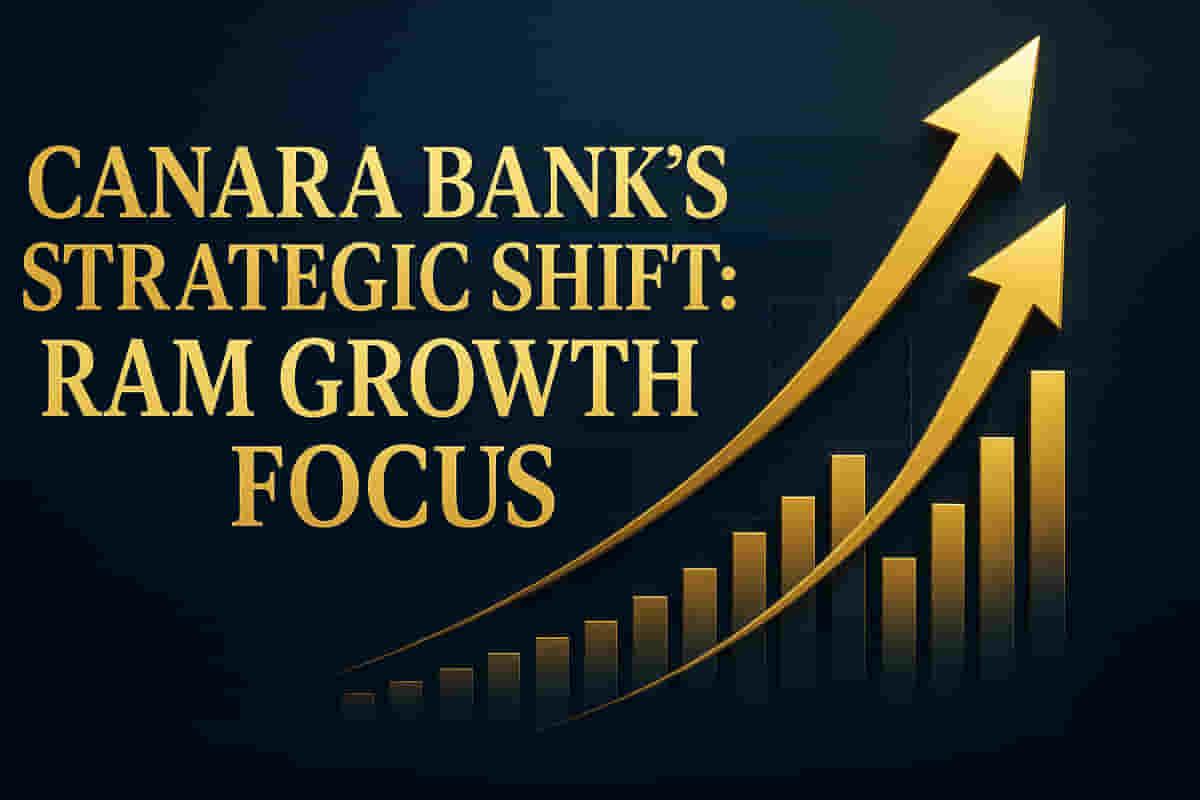Canara Bank Prioritizes RAM Sector Growth, Plans ₹9,500 Crore Capital Raise
Banking/Finance
|
31st October 2025, 1:01 PM

▶
Stocks Mentioned :
Short Description :
Detailed Coverage :
Canara Bank is strategically focusing on expanding its lending to the Retail, Agriculture, and MSME (RAM) sectors, aiming for a 60:40 mix between RAM and corporate lending. Managing Director & CEO Satyanarayana Raju stated that this board-approved strategy, initiated three years ago, seeks to achieve profitable growth without engaging in interest rate wars that erode profitability, especially in the corporate lending segment. The bank is on track to meet its targets, with RAM sector growth expected to consistently outpace corporate growth.
Furthermore, Canara Bank confirmed its plan to complete a capital raising program of ₹9,500 crore during the latter half of the current financial year. This includes ₹6,000 crore via tier II bonds and ₹3,500 crore via Additional Tier I (AT1) bonds, as approved by the board for FY26, adhering to Basel III norms.
The bank noted a positive impact from recent Goods and Services Tax (GST) rate reductions on vehicle loans, which are now seeing year-on-year growth of around 25%. Overall, for the second quarter of FY26, Canara Bank reported a 19% year-on-year increase in net profit to ₹4,774 crore, despite a marginal 1.87% decline in net interest income. Domestic deposits grew by 12.62% and domestic advances by 13.34%. Key segments within lending showed strong traction, with RAM credit expanding by 16.94% and overall retail credit rising by 29.11%, led by housing and vehicle loans.
Impact This news is significant for Canara Bank's investors, indicating a clear strategic direction towards more stable and profitable lending segments. The capital raise strengthens its financial base, and the positive profit growth amidst controlled corporate lending signals financial prudence. This clarity in strategy and financial health can positively influence investor confidence and the bank's stock performance.
Rating: 7/10
Difficult Terms Explained: RAM Sector: Stands for Retail, Agriculture, and MSME. This refers to loans given to individual consumers, farmers, and micro, small, and medium-sized enterprises, which are often considered more stable and less volatile than large corporate loans. MD & CEO: Managing Director & Chief Executive Officer, the top executive responsible for the bank's overall management and strategy. Basel III: A global regulatory framework developed by the Basel Committee on Banking Supervision to strengthen the regulation, supervision, and risk management of banks. It aims to improve banks' ability to absorb shocks arising from financial and economic stress. Tier II Bonds: A type of debt instrument issued by banks that ranks below senior debt but above equity in terms of priority in liquidation. They help banks meet regulatory capital requirements. Additional Tier I (AT1) Bonds: These are perpetual bonds (bonds with no maturity date) that can be written down or converted into equity if a bank's capital falls below a certain level. They are a key component of regulatory capital under Basel III. GST: Goods and Services Tax, an indirect tax levied on the supply of goods and services in India. Reductions in GST rates can make products and services cheaper, boosting demand. Net Profit: The profit remaining after all expenses, taxes, and interest have been deducted from total revenue. Net Interest Income (NII): The difference between the interest income generated by a bank and the interest it pays out to lenders (like depositors). It's a primary measure of a bank's profitability. Domestic Deposits: Funds held by individuals and businesses within India in savings accounts, fixed deposits, etc., with the bank. Domestic Advances: Loans disbursed by the bank to individuals and businesses within India.